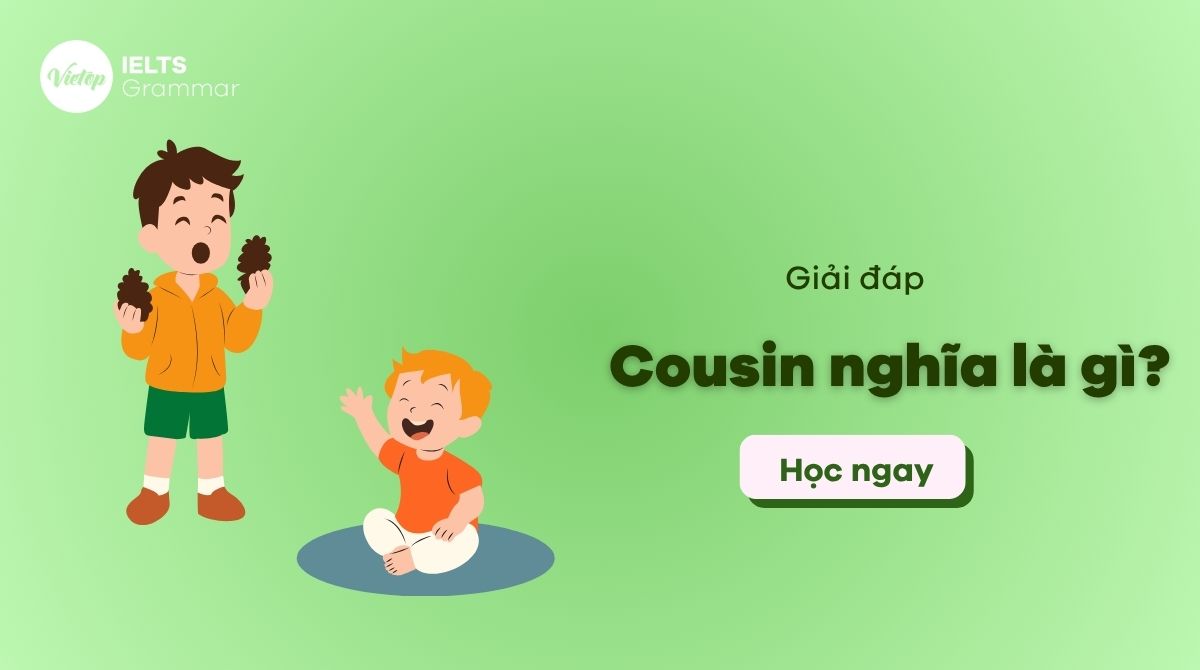Sự hoà hợp giữa chủ ngữ và động từ (Subject – verb agreement) – một trong những điểm ngữ pháp quan trọng nhất, thường xuất hiện trong các dạng bài thi trắc nghiệm cũng như có thể được áp dụng trong cả IELTS. Tuy nhiên đây được xem là điểm ngữ pháp “khó nhằn” nhất và thường là những chiếc “bẫy” khiến các bạn học viên mắc sai lầm trong phòng thi.
Vì vậy, trong bài viết này Vietop sẽ tổng hợp “tất tần tật” các quy tắc giúp các bạn nắm rõ điểm ngữ pháp này nhé!
1. Sự hòa hợp giữa chủ ngữ và động từ
Sự hoà hợp giữa chủ ngữ và động từ là việc phân tích chủ ngữ (danh từ/ cụm danh từ) sẽ được kết hợp với động từ chia như thế nào cho phù hợp. Bởi lẽ, không phải lúc nào chúng ta cũng chỉ có những chủ ngữ như He, She, It, You, We, They,… mà còn rất nhiều trường hợp phức tạp hơn.
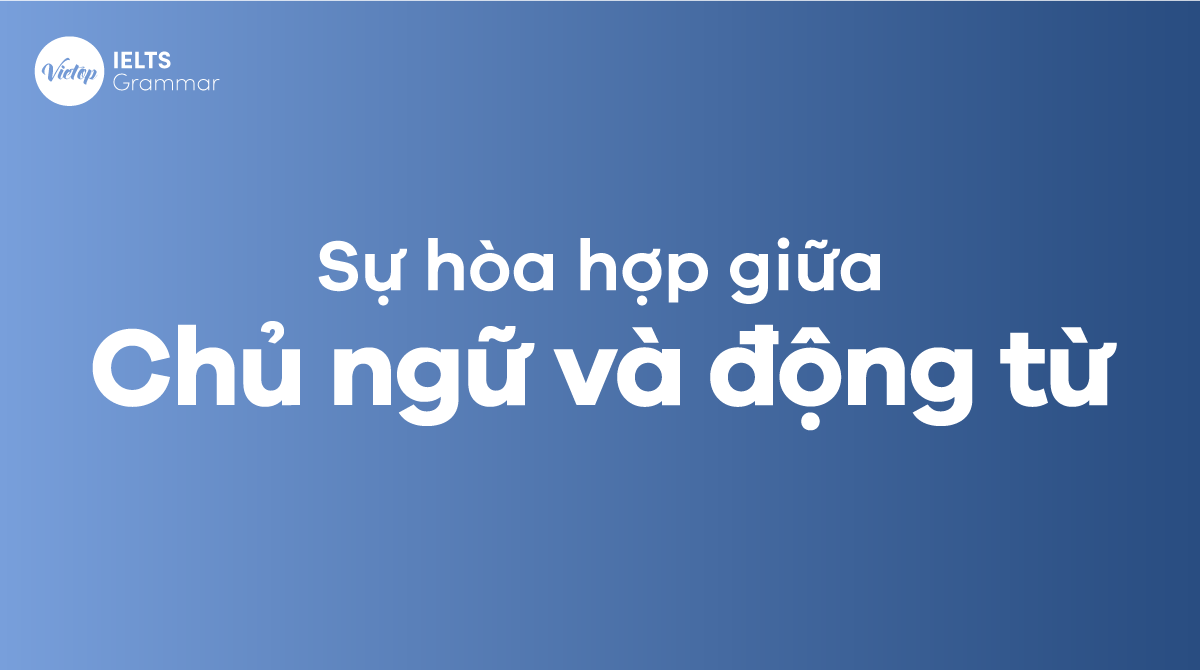
Quy tắc chung: Chủ ngữ là danh từ số ít hoặc danh từ không đếm được đi cùng động từ số ít và chủ ngữ số nhiều đi cùng động từ số nhiều.
Tuy nhiên, đôi khi chủ ngữ còn hoà hợp với động từ tuỳ theo ý tưởng diễn đạt hoặc danh từ/đại từ đứng trước theo các quy tắc nhất định. Sau đây là một số quy tắc cơ bản về sự hoà hợp giữa chủ ngữ và động từ.
2. Khi hai danh từ nối nhau bằng and thì động từ chia số nhiều
E.g:
- My sister and I like listening to classical music.
- Karen and Lisa go to school together every morning.
Lưu ý: Nếu hai danh từ trước và sau “and” chỉ cùng 1 cá thể thì ta dùng động từ số ít. (Dó có một số thứ đảm nhận 2 vai trò, 2 định nghĩa,…); đối với Phép cộng cũng dùng động từ số ít.
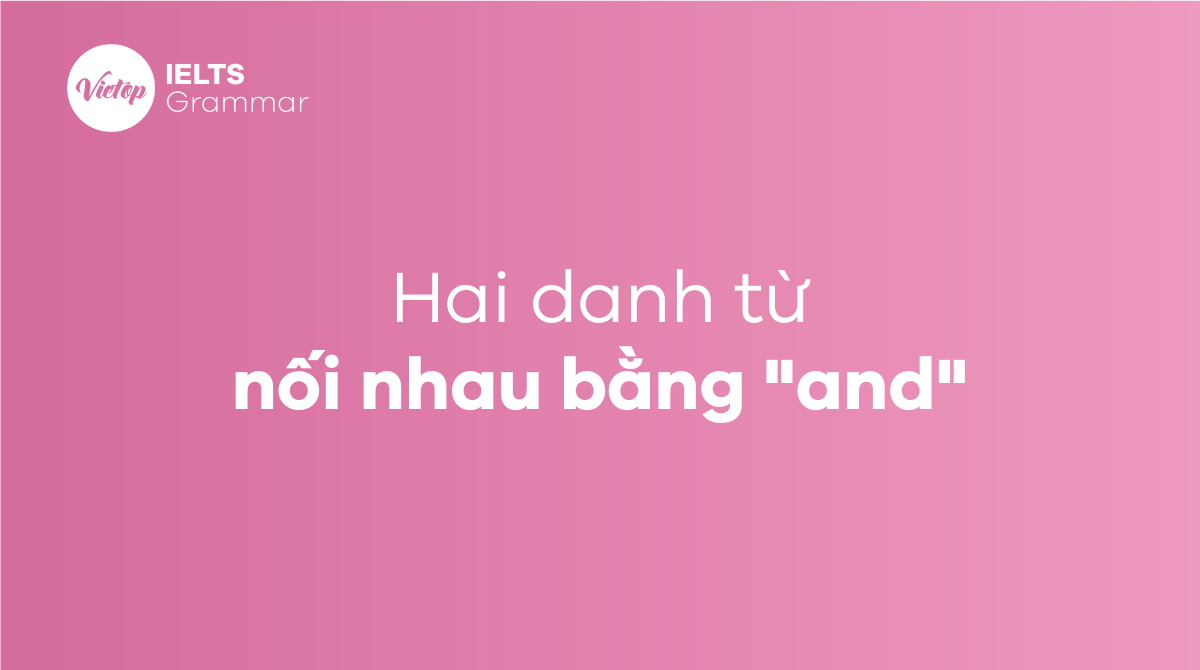
E.g:
- The professor and businessman are working in New York.
→ Professor và businessman ở đây là 2 người khác nhau.)
- The professor and businessman is working in New York.
→ 1 người nhưng đóng 2 vai trò
- Two and three is five. (2 + 3 = 5)
2.1. Each, Every, Many a…. đi với động từ số ít
Do những từ này được dịch là “mỗi” (một), nên cũng không lạ khi danh từ sau chúng được chia dạng số ít.
E.g:
- Each person is allowed 20kg of luggage. (Mỗi người chỉ được mang 20kg hành lý)
- Every student is told about the changes of the timetable. (Mỗi học sinh đều được thông báo về sự thay đổi thời khoá biểu).
- Many a politician has promised to make changes. (Rất nhiều chính trị gia đã hứa tạo nên sự khác biệt).
Xem thêm:
Trạng từ chỉ số lượng trong tiếng Anh
Cấu trúc No matter trong tiếng Anh và bài tập có đáp án
2.2. To infinitive/ Ving đi với động từ số ít
E.g:
- To jog/ Jogging every day is good for you. (Việc chạy bộ mỗi ngày rất tốt cho sức khoẻ).
2.3. Mệnh đề danh từ đi với động từ số ít
Mệnh đề danh từ bắt đầu bằng Wh– hay That được xem như 1 chủ thể, do đó động từ sẽ chia số ít.
E.g:
- What you have said is not true. (Điều anh đang nói là giả dối)
- That trees lose their leaves is a sign of fall. (Cây rụng lá báo hiệu mùa thu sang).
2.4. Tựa đề phim/ sách/ báo luôn chia động từ ở dạng số ít
E.g:
- “Tom and Jerry” is my son’s favorite cartoon. (“Tom và Jerry” là phim hoạt hình tớ thích nhất).
2.5. Danh từ kết thúc là “s” nhưng nhưng chia động từ số ít
- Danh từ tên môn học: Physics (Vật lý), Mathematics (Toán), Economics (Kinh tế học), Linguistics (Ngôn ngữ học), Politics (Chính trị học), Genetics (Di truyền học), Phonetics (Ngữ âm học), …
- Danh từ tên môn thể thao: Athletics (Điền kinh), Billiards (Bi-da), Checkers (Cờ đam), Darts (Phóng lao trong nhà), Dominoes (Đô mi nô)…
- Danh từ tên các căn bệnh: Measles (sởi), Mumps (quai bị), Diabetes (tiểu đường), Rabies (bệnh dại), Shingles (bệnh lở mình), Rickets (còi xương)….
- Cụm danh từ chỉ kích thước, đo lường: Two pounds is…. (2 cân)
- Cụm danh từ chỉ khoảng cách: Ten miles is…. (10 dặm)
- Cụm danh từ chỉ thời gian: Ten years is … (10 năm)
- Cụm danh từ chỉ số tiền: Ten dollars is…. (10 đô la)
- Cụm danh từ chỉ tên một số quốc gia, thành phố: The United States (Nước Mỹ), the Philippines (nước Phi-lip-pin), Wales, Marseilles, Brussels, Athens, Paris….
2.6. Tất cả những từ trên tuy có s nhưng không chỉ số nhiều mà chỉ đơn thuần là tên riêng, do đó động từ chia dạng số ít
E.g:
- 5 minutes is too little for me to finish the task. (5 phút là quá ít để tôi làm xong bài này).
- Phonetics is probably the most challenging course to me. (Âm vị học có lẽ là môn khó nhất đối với tôi).
2.7. Danh từ không kết thúc bằng “s” nhưng là số nhiều thì chia động từ số nhiều
Một số danh từ số nhiều tuy không có “s” ở sau cùng nhưng được biến đổi thành từ khác. Trường hợp này ta vẫn chia động từ số nhiều: People (người), cattle (gia súc), police (cảnh sát), army (quân đội), children (trẻ em), women (phụ nữ), men (đàn ông), teeth (răng), feet (chân),…
E.g:
- My feet are weary after a long day. (Chân tôi mỏi nhừ sau một ngày dài).
- The children are playing with their new toys. (Bọn trẻ đang chơi đồ chơi mới).
2.8. The + adj = N (chỉ người) chia động từ số nhiều
E.g:
- There are more of the poor than the rich. (Có nhiều người nghèo hơn là người giàu).
2.9. Hai danh từ nối nhau bằng cấu trúc: “either … or, neither… nor, not only….. but also” thì động từ chia theo chủ ngữ gần động từ nhất.
E.g:
- Neither she nor her children were inherited from the will.
- Either they or their son is not allowed to come in.
- Not only she but also her friends are going to the cinema.
2.10. Các danh từ nối nhau bằng: as well as, with, together with, along with, accompanied by thì chia động từ theo danh từ phía trước
E.g:
- She, as well as I, is going to university this year. (Chia theo “she”)
- Mrs. Smith together with her sons is away for holiday. (Chia theo “Mrs. Smith”)
3. Hai danh từ nối nhau bằng of
Hai danh từ nối với nhau bằng “of” thì chia theo danh từ phía trước nhưng nếu danh từ phía trước là “some, all, most, majority, enough, minority, half, phân số, phần trăm”…. thì lại phải chia theo danh từ phía sau.
E.g:
- The study of how living things work is called philosophy. (Chia theo “study”)
- Some of the students are late for class. (Nhìn trước chữ “of” gặp “some” nên chia theo chữ phía sau là students)
- Most of the water is polluted. (phía trước là most nên chia theo danh từ chính đứng sau là water)
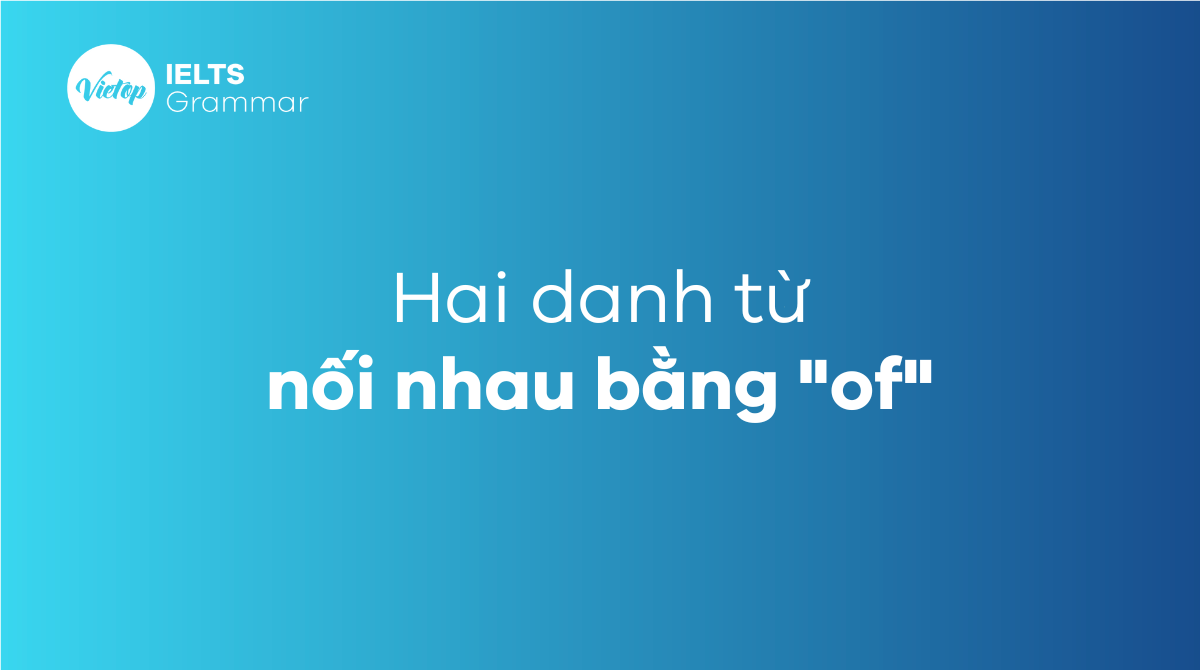
Lưu ý: Nếu các từ trên đứng một mình thì phải suy nghĩ xem nó là đại diện cho danh từ nào, nếu danh từ đó đếm được thì dùng số nhiều, ngược lại dùng số ít.
E.g:
The majority think that… (đa số nghĩ rằng…) → ta suy ra rằng để “suy nghĩ” được phải là “người”. Vậy câu này có nghĩa “đa số người nghĩ rằng…”
3.1. A number of và The number of
A number of + N (số nhiều) đi với động từ số nhiều; Còn The number of + N (số nhiều) + động từ số ít
E.g:
- A number of students are going to the class picnic. (Rất nhiều sinh viên sẽ đi picnic cùng lớp.)
- The number of days in a week is seven. (Số lượng ngày trong tuần là 7.)
3.2. Một số danh từ chỉ tập hợp
Bao gồm các từ như: “family, staff, team, group, congress, crowd, committee …”
Nếu chỉ về hành động của từng thành viên thì dùng động từ số nhiều, nếu chỉ về tính chất của tập thể đó như một đơn vị thì dùng động từ số ít.
E.g:
- The family are having breakfast. (Ý nói từng thành viên trong gia đình đang ăn sáng).
- The family is very conservative. (Chỉ tính chất của tập thể gia đình đó như là một đơn vị).
4. Cấu trúc với There chia động từ theo danh từ gần động từ nhất
Cấu trúc với “there” thì ta chia động từ chia theo danh từ đứng gần động từ nhất.
E.g:
- There is a book on the table. (Chia theo “a book”)
- There are two books on the table. (Chia theo “books”)
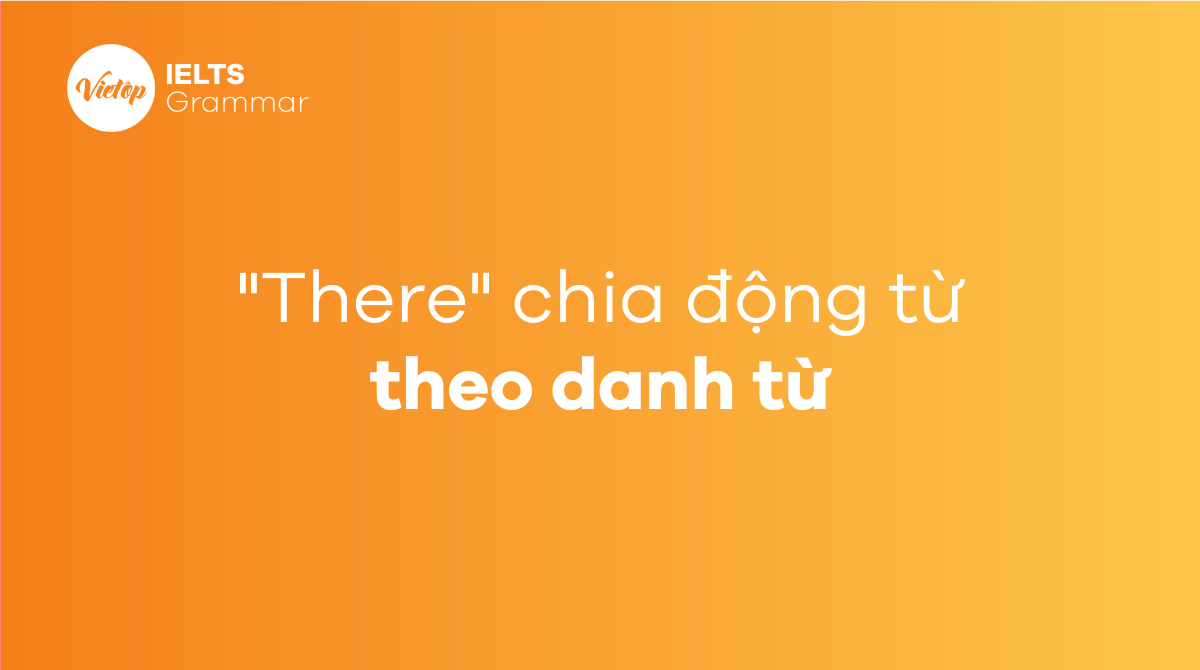
*Lưu ý: There is a book and two pens on the table. (vẫn chia theo “a book vì nó đứng gần động từ “is” hơn)
Xem thêm:
5. Đối với đại từ sở hữu thì chia động từ theo danh từ đề cập trước đó
Khi gặp các đại từ sở hữu như: mine, his, hers, yours; ours, theirs thì phải xem cái gì của (những) người/ vật đó là số ít hay số nhiều.
E.g:
- Lend me your scissors. Mine … very rusty.
→ Ta suy ra là của tôi ở đây ý nói scissors của tôi: số nhiều chia động từ ở số nhiều → Mine are very rusty)
6. Những danh từ luôn chia dạng số nhiều
- Một số từ như “pants” (quần dài ở Mỹ, quần lót ở Anh), “trousers” (quần), “pliers” (cái kìm), “scissors” (cái kéo), “shears” (cái kéo lớn – dùng cắt lông cừu, tỉa hàng rào), “tongs” (cái kẹp) thì đi với động từ số nhiều.
- Tuy nhiên, khi có từ “A pair of/ Two pairs of…” đi trước các danh từ này, đứng làm chủ từ, thì chia động từ số ít.
E.g:
- The scissors are very sharp. (Cái kéo rất sắc bén.)
- A pair of scissors was left on the table. (Cái kéo được người ta để lại trên bàn.)
7. Với đại từ bất định thì động từ chia số ít
Đại từ bất định (Chỉ chung chung, không nói rõ đối tượng là ai) gồm: Some one, any one, no one, every one, something, anything, everything, nothing,…
E.g:
- Everything seems perfect. (Mọi thứ dường như hoàn hảo.)
- Nobody loves me. (Chả có ai yêu tôi cả.)
8. Với chủ ngữ có No/ None
Nếu sau “no” là danh từ số ít thì động từ chia số ít. Nếu sau “no” là danh từ số nhiều thì động từ chia số nhiều.
E.g:
- No money has been invested for this company for 2 months.
- No lessons were given to us by our teacher this morning.
- None of us like to drink this.
9. Cấu trúc đảo ngữ với cụm từ trạng từ chỉ nơi chốn
Khi cụm trạng từ chỉ nơi chốn được đặt lên đầu câu, động từ hoà hợp với (cụm) danh từ đứng sau động từ.
E.g: On the top of the hill is a temple. (Trên đỉnh của quả đồi có một ngôi đền).
10. Sau either of/ neither of, động từ sẽ được chia theo chủ ngữ đứng gần động từ nhất
- Either/neither + danh từ + or/nor + danh từ số ít + động từ số ít
- Either/neither + danh từ + or/nor + danh từ số nhiều + động từ số nhiều
E.g:
- Neither John nor his friends are going to the beach today. (Chữ “friends” đứng gần động từ hơn nên chia là “are))
- Either John or Bill is going to the beach today. (Bill là 1 người nên chia động từ “is”).
Xem thêm: Động từ ghép trong tiếng Anh
11. Bài tập sự hoà hợp giữa chủ ngữ và động từ (Subject – Verb agreement)
Bài 1: Choose the correct answer
- At the end of the fall (comes/come) the hard tests.
- The hard tests (comes/come) at the end of the fall.
- Both of my roommates (has/have) decided to live in the dorms.
- Both of the dogs (has/have) collars.
- Each of the students (is/are) responsible for doing his or her work.
- Either my mother or my brothers (is/are) going to sell the car.
- Neither my sisters nor my father (is/are) going to sell the house.
- Either the boy or the girls (walk/walks) into the room.
- Either the girls or the boy (walk/walks) into the room.
- Everyone (has/have) done his or her homework.
- Mary and John usually (plays/play) together.
- Neither the dogs nor the cat (is/are) very hungry.
- The samples on the tray in the lab (need/needs) testing.
- The slaughter of animals for their fur (has/have) caused controversy.
- The student, as well as his teacher, (was/were) going on the field trip.
Bài 2: Find and correct the error in these sentences
- Batik cloth from Bali, blue and white ceramics from Cambodia, and a bocce ball from Turin has made Hannah’s room the talk of the dorm.
- Leah is the only one of the many applicants who has the ability to step into this job.
- Measles are a contagious childhood disease.
- Neither the explorer nor his companions was ever seen again.
- Not until my interview with Dr Smith was other possibilities opened to me.
- One of the main reasons for elephant poaching are the profits received from selling ivory tusks.
- The board of directors, ignoring the wishes of the neighbourhood, have voted to allow further development.
- The presence of certain bacteria in our bodies are one of the factors that determines our overall health.
Bài 3: Fill in the blank with the correct form of the word
- Anyone who (want) ______ to try out (need) ______ to make an appointment.
- Each of the barrels (be) ______ full. Each one (need) ______ to be inspected. They (be) ______ from Italy.
- Every one of the shoes (seem) ______ to need a shine. Neither of us (be) ______ ready to do it though.
- There (have) ______ to be better bargains somewhere in town.
- Here (come) ______ the meanest kids on the block. Why do they act so badly?
- Jason, Timothy, Sandra, and I (be) ______ responsible for closing the store on the weekend.
- Neither Jan nor I (be) ______ able to attend the meeting last Monday. We were sorry we had to miss it.
- None of the tests (be) ______ graded, but all of the homework (be) ______ checked.
- One of those sentences doesn’t make sense to me, but my classmates (be not) ______ confused by it.
- The doctor and her husband (take) ______ a trip to Mexico each year.
- The nurse or the secretary (come) ______ in on Saturday. Much work (need) ______ to be done.
- The stories in this book don’t interest me, but my wife and son (enjoy) ______them.
- There (be) ______ two tornadoes near here this year. They (frighten) ______ me.
- They (be) ______ neighbours and (play) ______ in the same band.
- This class, together with math and biology, (keep) ______ me extremely busy.
- Tim and Jim (be) ______ friends for a long time.
Bài 4: Choose the correct form of the verb that agrees with the subject
- (Is, Are) the news on at five or six?
- (Is, Are) the tweezers in this drawer?
- Nine dollars (is, are) the price of a movie nowadays.
- Either answer (is, are) acceptable.
- Either my mother or my father (is, are) coming to the meeting.
- Either my shoes or your coat (is, are) always on the floor.
- Every one of those books (is, are) fiction.
- George and Fred (doesn’t, don’t) want to see that movie.
- He (doesn’t, don’t) know the answer.
- Mathematics (is, are) Anna’s favorite subject, while English (is, are) my favorite subject.
- Nobody (know, knows) the trouble I’ve seen.
- One of my sisters (is, are) going on a trip to China.
- Emily and her brothers (is, are) at school.
- The committee (debates, debate) these questions carefully.
- The dog or the cats (is, are) outside.
- The man with all the birds (live, lives) on my street.
- The movie, including the credit, (take, takes) about one hour and a half to watch.
- The players, as well as the captain of the team, (want, wants) to win.
- There (was, were) ten candies in that bag. Now there (is, are) only one left!
- Your shirt (is, are) at the cleaner’s.
Đáp án
Bài 1
- come
- come
- have
- have
- is
- are
- is
- walk
- walks
- has
- play
- is
- need
- has
- was
Bài 2
- Batik cloth from Bali, blue and white ceramics from Cambodia, and a bocce ball from Turin have made Hannah’s room the talk of the dorm.
- Leah is the only one of the many applicants who have the ability to step into this job.
- Measles is a contagious childhood disease.
- Neither the explorer nor his companions were ever seen again.
- Not until my interview with Dr Smith were other possibilities opened to me.
- One of the main reasons for elephant poaching is the profits received from selling ivory tusks.
- The board of directors, ignoring the wishes of the neighbourhood, have voted to allow further development.
- The presence of certain bacteria in our bodies is one of the factors that determines our overall health.
Bài 3
- Anyone who wants to try out needs to make an appointment.
- Each of the barrels is full. Each one needs to be inspected. They are from Italy.
- Every one of the shoes seems to need a shine. Neither of us is ready to do it though.
- There have to be better bargains somewhere in town.
- Here come the meanest kids on the block. Why do they act so badly?
- Jason, Timothy, Sandra, and I are responsible for closing the store on the weekend.
- Neither John nor I was able to attend the meeting last Monday. We were sorry we had to miss it.
- None of the tests is graded, but all of the homework is checked.
- One of those sentences doesn’t make sense to me, but my classmates are not confused by it.
- The doctor and her husband take a trip to Mexico each year.
- The nurse or the secretary comes in on Saturday. Much work needs to be done.
- The stories in this book don’t interest me, but my wife and son enjoy them.
- There have been two tornadoes near here this year. They frighten me.
- They are neighbours and play in the same band.
- This class, together with math and biology, keeps me extremely busy.
- Tim and Jim have been friends for a long time.
Bài 4
- Is
- Are
- Is
- Is
- Is
- Is
- Is
- Don’t
- Doesn’t
- Is – Is
- Knows
- Is
- Are
- Debates
- Is
- Lives
- Takes
- Wants
- Were – Is
- Is
Hy vọng qua bài viết này, Vietop English đã giúp các bạn nắm rõ những quy tắc về Sự hoà hợp giữa chủ ngữ và động từ để “giải quyết gọn” những câu hỏi hóc búa thường xuất hiện trong các bài thi. Chúc các bạn học tốt! Và đừng quên theo dõi chuyên mục ngữ pháp – Vietop để học IELTS mỗi ngày nhé!

![[Mới nhất] Cập nhật bảng tổng hợp quy đổi điểm IELTS sang điểm xét tuyển đại học khu vực phía Nam 2025](https://vietop.edu.vn/wp-content/uploads/2025/12/thumbnail-cap-nhat-bang-quy-doi-diem-ielts.jpg)




